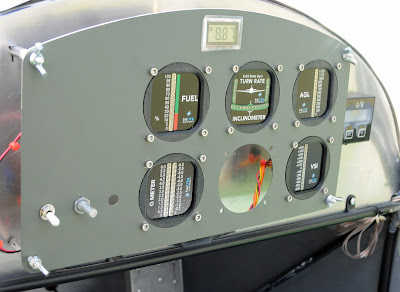Please note: James' blog has moved to a Wordpress site. To access it, please visit
http://jameswiebe.wordpress.com/. All posts have been transferred to the new site, and all new posts will only be accessible via Wordpress. Thank you for your interest!
It's time for Sun N Fun.
We had very little fun preparing for Sun N Fun -- it was Rain N Pain in Wichita for four days, and our field was flooded. The gang was working nearly non stop, working on preparing 3 planes. One was a customer delivery, and it had highest priority. Another was a show plane, which we did not finish in time. The third was a technology demonstrator, which we call the Wow Plane and it also would be going to Sun N Fun. Mike had been working hard on the Wow Plane for several months, and the rest of our gang was working on finishing it up.
The rain ended Thursday night, and a walk of the flight field on Friday morning showed a diagonal path across the runway which avoided puddles and headed into the wind. We had to fly the Wow plane!
So we rolled out the Wow Plane. Around 4 in the afternoon, it took to the air for the first time.
Wow.
Wow!
Phenomonal crisp climb with only 28HP. Flight controls as if they were on ball bearing rails. Lots more.
And you'll find out lots more, soon, in a news release from Belite Aircraft.
 |
| The Wow ultralight airplane from Belite aircraft |
You can see more pictures of this cool plane immediately on
Belite's flickr account.













